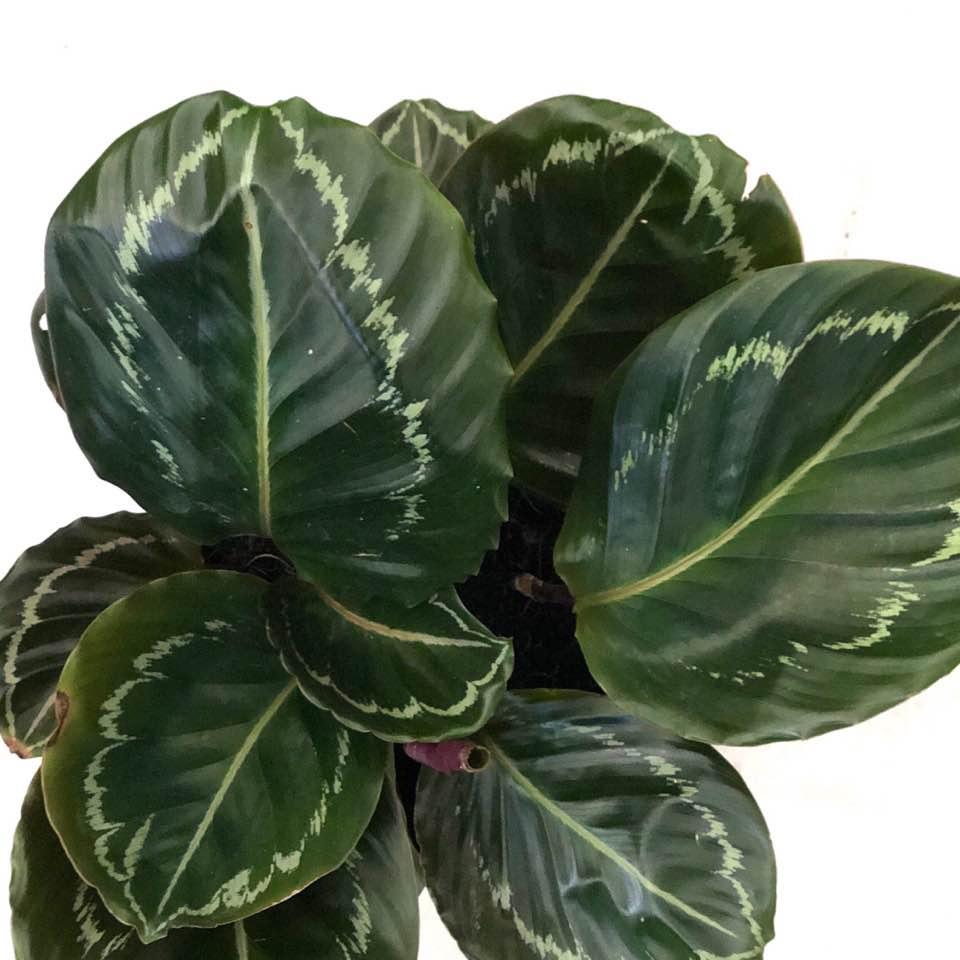植物经验
详细说明
Temperature:
Average room temperatures of 65-75ºF (18-24ºC) are suitable, and no lower than 60ºF (15ºC). Sudden temperature drops and cold drafts should be avoided.
Light:
Like many plants, the Calathea enjoys bright light without direct sunlight. North, east or west facing rooms are suitable.
Watering:
This species enjoys being in moist soil at all times. Avoid using hard water and use either tepid rain or distilled water. Watering needs to decrease naturally after the growing season, before and during winter.
Soil:
A peat based potting mix is required. 2 parts peat and 1 part perlite is one mixture that will be fine.
Re-Potting:
Re-pot during spring once every two years, only in a slightly larger pot if the roots have taken all the room with the current pot.
Fertilizer:
Fertilize with a balanced diluted solution every 2 weeks from April - early October.
Humidity:
Humidity needs some attention with Calatheas. Misting helps, but you may also need to place the plant pot on a humidity tray with pebbles or increase the humidity with a humidifier.
Pruning:
Regular pruning and timely removal of brown leaves can help maintain the height of the plant.
Propagation:
Propagate by division when the plant matures. After re-potting the divided plants do not over water.
Potential Problems
Leaves curling and spots:
Your likely to have been under-watering your plant. Is the soil dry or has it been drying out frequently? This is easy to resolve by watering and being more consistent with keeping the soil moist at all times.
Leaf tips brown:
Most likely cause here is dry air and lack of humidity. The solution is to increase humidity levels.
Leaves dropping:
Again, the air could be too dry and the humidity may need to be increased.
Limp stems:
You may have been over-watering the plant during the winter and providing low temperatures. Follow the above watering and temperature guidelines.
Attack by pests:
Spider mites, scale, mealy bugs, and aphids can affect the health of your plant, especially if the plant is grown in arid conditions. Regular inspection and spraying is essential to avoid diseases. High humidity is essential for the plant, but it also promotes bacterial and fungal growth. Water the plant when the uppermost layer of the soil (an inch below the surface) is dry.
Repotting Calatheas
Use a glazed ceramic or plastic pot with at least two drainage holes at the base. Choose one that measures 1 to 2 inches larger than the original pot. Avoid using a catch-pot since they lack adequate drainage and will cause the soil to stagnate.
Mix two parts peat moss or milled coir, two parts perlite and one part potting soil in a bucket. Drizzle water onto the components while mixing them together. Keep adding water and stirring until the mixture is evenly moist and has a uniform appearance.
Place a coffee filter or paper towel over the drainage hole in the bottom of the pot to keep the soil from washing away. Fill the bottom one-third of the pot with the soil mixture and firm it well with your fingertips.
Remove the zebra plant from its original pot. Place your hand over the opening with the stems between your fingers. Carefully flip the pot upside-down and jiggle it to loosen the rootball. Guide the plant from the pot without tugging on the stems or leaves.
Crumble away one-third of the soil from around the roots. Gently tease apart the roots with your fingertips so they hang freely. Inspect the rootball and use small scissors to snip off any black or damage roots.
Hold the zebra plant in the pot so its roots touch the surface of the soil and the base of the stems rest just below the top edge of the pot. Add small amounts of soil around the roots until they are covered. Mist the soil occasionally to settle it.
Add soil until the zebra plant's entire rootball is buried. Firm the soil gently with your fingertips to anchor the plant. Water it to a depth of 2 inches and position it in the same spot where it originally grew.
----------
LIGHT
A Calathea Plant likes bright indirect light; so placing it in front of an east, west, or north window is ideal. Too much direct sun burns the leaves of a Calathea Plant and causes the beautiful leaf colors to fade.
WATER
Calathea Plants are very sensitive to the water you use. Hard water, soft water, fluoridated water, or water of poor quality causes the leaves of a Calathea Plant to turn brown from leaf burn. The best way to water a Calathea Plant is to use distilled water, rain water, or allow your tap water to sit out over night before using it. Keep the soil of a Calathea Plant moist but never soggy. Allow the top 2-3” to dry out before watering. Never let a Calathea Plant sit in water.
FERTILIZER
Feed a Calathea Plant monthly in the spring, summer, and fall with a basic houseplant food at ½ the recommended strength. Don't fertilize a Calathea Plant if it is not growing.
TEMPERATURE
Calathea Plants like temperatures between 65-80 degrees, and do not like cold drafts or temperatures below 55-60 degrees. Hot temperatures cause the leaves of a Calathea Plant to curl.
HUMIDITY
High humidity is a must for a Calathea Plant. A Calathea Plant gets brown leaf edges when the air is too dry. Humidity can be increased by placing your Calathea Plant on a tray of wet pebbles (be sure the pot is on the pebbles and not in the water), setting a humidifier close by, or by grouping plants together to create a greenhouse effect.
FLOWERING
The leaves of a Calathea Plant are more beautiful than many of the flowers on other indoor plants. With over 300 types of Calathea Plants, some varieties, such as Calathea Crocata, White Ice, and Brazilian have lovely flowers as well as spectacular leaves.
PESTS
Spider mites, scale, Mealy Bugs and Aphids are houseplant pests that can be a problem for Calathea Plants.
DISEASES
The high humidity that a Calathea Plant needs, encourages bacterial and fungal diseases which usually manifest themselves as leaf lesions.
SOIL
Use a good light porous indoor potting soil that retains water but still drains quickly for Calathea Plants. African Violet soil works well for Calatheas.
POT SIZE
A Calathea Plant rarely need repotting.
PRUNING
Cut off brown or crispy Calathea leaves as soon as they appear.
PROPAGATION
Calatheas Plants are propagated by plant division but it is a little difficult.
POISONOUS PLANT INFO
Calatheas are non- Poisonous Houseplants.
Average room temperatures of 65-75ºF (18-24ºC) are suitable, and no lower than 60ºF (15ºC). Sudden temperature drops and cold drafts should be avoided.
Light:
Like many plants, the Calathea enjoys bright light without direct sunlight. North, east or west facing rooms are suitable.
Watering:
This species enjoys being in moist soil at all times. Avoid using hard water and use either tepid rain or distilled water. Watering needs to decrease naturally after the growing season, before and during winter.
Soil:
A peat based potting mix is required. 2 parts peat and 1 part perlite is one mixture that will be fine.
Re-Potting:
Re-pot during spring once every two years, only in a slightly larger pot if the roots have taken all the room with the current pot.
Fertilizer:
Fertilize with a balanced diluted solution every 2 weeks from April - early October.
Humidity:
Humidity needs some attention with Calatheas. Misting helps, but you may also need to place the plant pot on a humidity tray with pebbles or increase the humidity with a humidifier.
Pruning:
Regular pruning and timely removal of brown leaves can help maintain the height of the plant.
Propagation:
Propagate by division when the plant matures. After re-potting the divided plants do not over water.
Potential Problems
Leaves curling and spots:
Your likely to have been under-watering your plant. Is the soil dry or has it been drying out frequently? This is easy to resolve by watering and being more consistent with keeping the soil moist at all times.
Leaf tips brown:
Most likely cause here is dry air and lack of humidity. The solution is to increase humidity levels.
Leaves dropping:
Again, the air could be too dry and the humidity may need to be increased.
Limp stems:
You may have been over-watering the plant during the winter and providing low temperatures. Follow the above watering and temperature guidelines.
Attack by pests:
Spider mites, scale, mealy bugs, and aphids can affect the health of your plant, especially if the plant is grown in arid conditions. Regular inspection and spraying is essential to avoid diseases. High humidity is essential for the plant, but it also promotes bacterial and fungal growth. Water the plant when the uppermost layer of the soil (an inch below the surface) is dry.
Repotting Calatheas
Use a glazed ceramic or plastic pot with at least two drainage holes at the base. Choose one that measures 1 to 2 inches larger than the original pot. Avoid using a catch-pot since they lack adequate drainage and will cause the soil to stagnate.
Mix two parts peat moss or milled coir, two parts perlite and one part potting soil in a bucket. Drizzle water onto the components while mixing them together. Keep adding water and stirring until the mixture is evenly moist and has a uniform appearance.
Place a coffee filter or paper towel over the drainage hole in the bottom of the pot to keep the soil from washing away. Fill the bottom one-third of the pot with the soil mixture and firm it well with your fingertips.
Remove the zebra plant from its original pot. Place your hand over the opening with the stems between your fingers. Carefully flip the pot upside-down and jiggle it to loosen the rootball. Guide the plant from the pot without tugging on the stems or leaves.
Crumble away one-third of the soil from around the roots. Gently tease apart the roots with your fingertips so they hang freely. Inspect the rootball and use small scissors to snip off any black or damage roots.
Hold the zebra plant in the pot so its roots touch the surface of the soil and the base of the stems rest just below the top edge of the pot. Add small amounts of soil around the roots until they are covered. Mist the soil occasionally to settle it.
Add soil until the zebra plant's entire rootball is buried. Firm the soil gently with your fingertips to anchor the plant. Water it to a depth of 2 inches and position it in the same spot where it originally grew.
----------
LIGHT
A Calathea Plant likes bright indirect light; so placing it in front of an east, west, or north window is ideal. Too much direct sun burns the leaves of a Calathea Plant and causes the beautiful leaf colors to fade.
WATER
Calathea Plants are very sensitive to the water you use. Hard water, soft water, fluoridated water, or water of poor quality causes the leaves of a Calathea Plant to turn brown from leaf burn. The best way to water a Calathea Plant is to use distilled water, rain water, or allow your tap water to sit out over night before using it. Keep the soil of a Calathea Plant moist but never soggy. Allow the top 2-3” to dry out before watering. Never let a Calathea Plant sit in water.
FERTILIZER
Feed a Calathea Plant monthly in the spring, summer, and fall with a basic houseplant food at ½ the recommended strength. Don't fertilize a Calathea Plant if it is not growing.
TEMPERATURE
Calathea Plants like temperatures between 65-80 degrees, and do not like cold drafts or temperatures below 55-60 degrees. Hot temperatures cause the leaves of a Calathea Plant to curl.
HUMIDITY
High humidity is a must for a Calathea Plant. A Calathea Plant gets brown leaf edges when the air is too dry. Humidity can be increased by placing your Calathea Plant on a tray of wet pebbles (be sure the pot is on the pebbles and not in the water), setting a humidifier close by, or by grouping plants together to create a greenhouse effect.
FLOWERING
The leaves of a Calathea Plant are more beautiful than many of the flowers on other indoor plants. With over 300 types of Calathea Plants, some varieties, such as Calathea Crocata, White Ice, and Brazilian have lovely flowers as well as spectacular leaves.
PESTS
Spider mites, scale, Mealy Bugs and Aphids are houseplant pests that can be a problem for Calathea Plants.
DISEASES
The high humidity that a Calathea Plant needs, encourages bacterial and fungal diseases which usually manifest themselves as leaf lesions.
SOIL
Use a good light porous indoor potting soil that retains water but still drains quickly for Calathea Plants. African Violet soil works well for Calatheas.
POT SIZE
A Calathea Plant rarely need repotting.
PRUNING
Cut off brown or crispy Calathea leaves as soon as they appear.
PROPAGATION
Calatheas Plants are propagated by plant division but it is a little difficult.
POISONOUS PLANT INFO
Calatheas are non- Poisonous Houseplants.
花相册 (5)
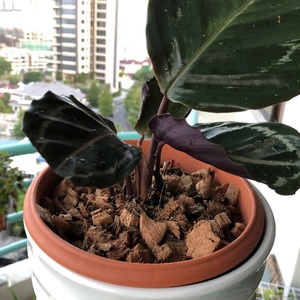
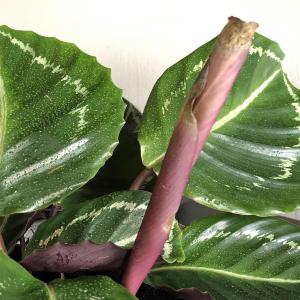
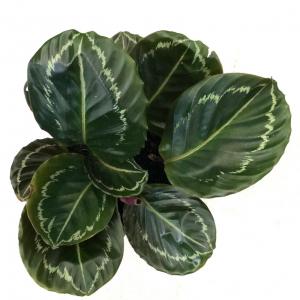

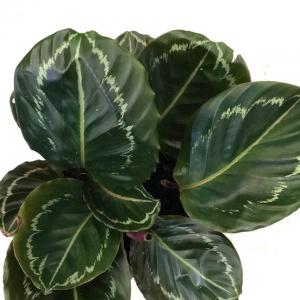
kensong
2018年06月02日

Repotted my Calathea to a better draining pot. Had a lot of wood bark in the old media.


kensong
2018年04月16日

This is my first growing diary.




